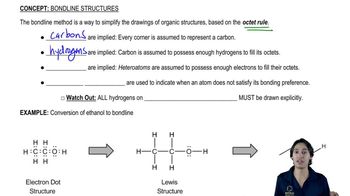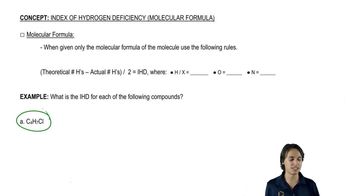Convert the following structural formulas to line-angle drawings
(c) CH3CH2NHCH2CH2OH
 Verified step by step guidance
Verified step by step guidance Verified video answer for a similar problem:
Verified video answer for a similar problem:



 6:06m
6:06mMaster How to interpret condensed structures. with a bite sized video explanation from Johnny
Start learning